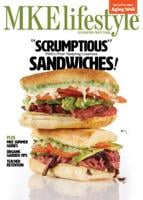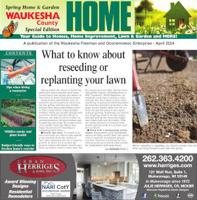Here’s an opening line to use next time you’re at a boring office party. Question: “When is a honeysuckle not a honeysuckle?” Answer: “When it’s a bush-honeysuckle.”
It may not result in riotous laughter, but the question certainly will pique the imagination of the listener and be an entry for continued conversation. Either that or result in a quick exit to the cocktail bar! True honeysuckles are of the genus Lonicera while bush-honeysuckles are Diervilla. Both are in the Caprifoliaceae family. Honeysuckles can be an invasive plant, especially in wooded areas, while Diervilla makes an excellent landscape specimen.
There are only three species of Diervilla, and all are native to Eastern North America. They are valued for foliage color, fragrant tubular pale-yellow flowers in summer, which are produced on current season’s growth, and tolerance for a wide range of soil conditions. Also, their compact dimensions allow them to fit into any size garden. The genus honors French surgeon Dr. Marin Diereville, who introduced the plant to European gardens in 1700.
Diervilla lonicera, the Northern bush-honeysuckle, is found in the Northern tier of the United States and Canada, from Maine to Saskatchewan. Its range includes all of Wisconsin.
Of the three species, it is the most compact, maturing at a height of 2 to 3 feet. Leaves are medium to dark green in the summer, changing to dark red in the fall. Flowers are produced in July and August, a time when few landscape shrubs are in bloom.
Northern bush-honeysuckle is found in forests dominated by balsam fir and jack pine and can tolerate any light condition, although more sun leads to better fall leaf colors. Any well-drained soil is acceptable. Diervilla lonicera, as is true of all diervillas, spreads by underground stems called rhizomes. It is one of the first plants to recover after a forest fire because the rhizomes are protected from the above-ground flames.

Glenn Herold
Diervilla lonicera flowers attract bumble bees, butterflies and moths and, in its native habitat, is a winter food source for moose and deer. No insect or disease problems are prominent in this or the other two species. “Copper” is a cultivar that was selected for copper-red new growth as well as fall color.
Diervilla rivalaris, the mountain bush-honeysuckle, is found in moist woods and along roadsides in Alabama, Georgia and Tennessee. Like Northern bush-honeysuckle, it has dark green leaves that turn reddish. It differs by having hairy leaves and a size up to 6 feet. In its native habitat it is somewhat threatened because of development.
The cultivar “Morton,” trademarked Summer Stars is a 3-foot plant selected at the Morton Arboretum in Lisle, Ill. Honeybee ™ is a cultivar selected locally by McKay Nursery in Waterloo. Foliage on the 1-to-4-foot plant is yellow in the summer.
Diervilla sessifolia, Southern bush-honeysuckle, is found in the Smoky Mountains and Southern Appalachian regions on bluffs, slopes, stream banks and borders of woodlands. Size is 3 to 5 feet. Like the other species, it spreads by rhizomes, tolerates full sun or part shade and is not adversely affected by summer drought. Foliage color and flower size is exceptionally good on this species, resulting in many cultivars being selected and it being hybridized with Diervilla lonicera for improved hardiness and compact size. These hybrids are often sold as Diervilla x splendens.
Diervilla sessifolia Cool Splash™ is a 2-to-3-foot plant that is an eye-catcher in my garden. The dark green leaves are contrasted with a broad white to creamy-white margin. Diervilla sessifolia “Butterfly” has bronze new leaves and yellow to red fall color. It has been a great performer in my garden.
Diervilla x splendens “El Madrigal,” which is sold by the trademark name Firefly Nightglow, is a 3-foot plant with reddish-purple leaves in the summer and extending into fall. Growth habit is upright, rather than spreading. Flowers are a bit earlier than other cultivars, starting in late May and continuing through June. I planted this last year and look forward to its development.
Proven Winners, a plant introduction company, has recently released their Kodiak series of bush-honeysuckles. Kodiak Red has red new growth and fall color. Kodiak Black has exceptionally dark purple foliage. Kodiak Orange has foliage in hues of orange. Kodiak Fresh is a 3-foot plant with yellow summer foliage which changes to orange in the fall.
Bush-honeysuckles are attractive to the eye and easy to grow and maintain. Every spring I cut my plants down to the ground. By summer they are at their mature size and ready to bloom. If you still have honeysuckles in your yard, maybe it’s time to replace them with bush-honeysuckles.
Cedarburg resident Glenn Herold was professor of horticulture at Illinois Central College, East Peoria, IL from 1979 to 2011. He earned his BS in biology and MS in horticulture from the University of Wisconsin- Madison. Currently he holds memberships in the Midwest Regional Hosta Society, American Hosta Society, American Conifer Society, The Maple Society, Wisconsin Woody Plant Society, and Wisconsin Hardy Plant Society. Anyone with questions or comments, can email Glenn at PlantmanGlenn@gmail.com.
Additional articles on plants and gardening can be found on my blog:















